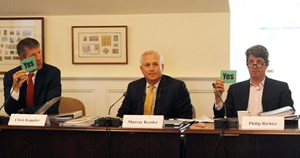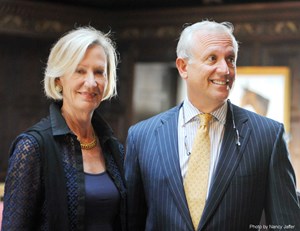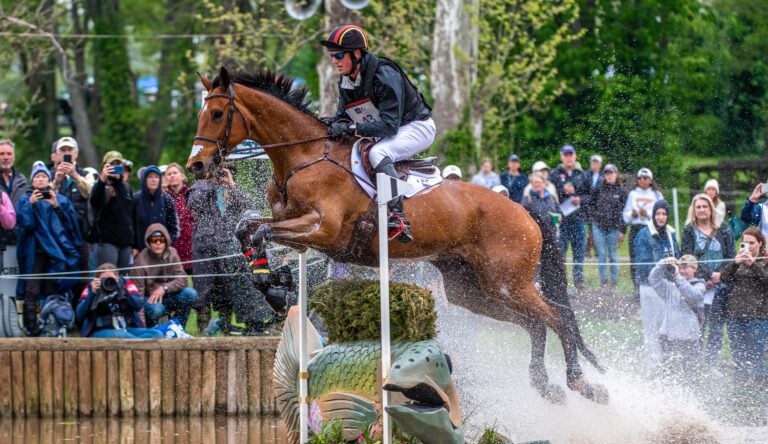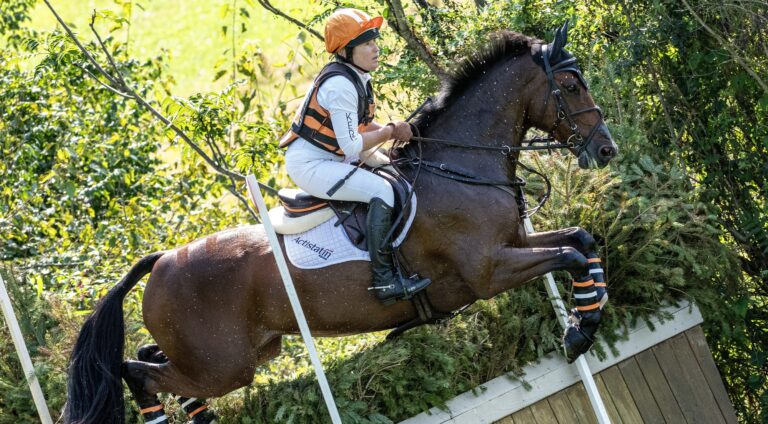June 21, 2016 — Anyone who suffered through the long-running governance battle between the old USA Equestrian and the U.S. Equestrian Team in the early 2000s won’t forget it. Friends and co-workers turned against each other, with some rifts becoming permanent.
Hostilities ended years ago, but it wasn’t until this week that it was safe to say the ultimate in rapprochement was reached. The USEF, USAE’s successor, held its mid-year meeting yesterday and today at the historic USET stables in Gladstone, where the likes of Billy Steinkraus, George Morris and the late Frank Chapot trained.
If you weren’t around for the unpleasantness 14 or 15 years ago, here’s a synopsis: At issue was a requirement that all Olympic sports have one national governing body. The duties couldn’t be divided the way they were with USAE, the national federation that was in charge of a wide range of breeds and disciplines, and the USET, which funded, trained and fielded international teams.
When a settlement finally was reached, USEF became the national governing body, and the USET was repurposed as a foundation that provides USEF with funding for high performance training and competition.
I asked USET Foundation President and CEO Tucker Johnson, a world championships four-in-hand driving multi-medalist, for his take on this historic gathering. It was something few of us would have believed could take place when the sport was in the midst of the bitterness.
Click on the video below to hear what he said.
The biggest thing that happened at the meeting was a foregone conclusion. Murray Kessler, selected by the nominating committee to succeed Chrystine Tauber as USEF president in January 2017, was elected in a flurry of green “Yes” voting cards. While 13 people were nominated for the post, only two wanted to run, and Murray got the nod.
 It was a unanimous “Yes” vote at the U.S. Equestrian Federation mid-year meeting for Murray Kessler to become the organization’s next president. | Photo copyright 2016 by Nancy Jaffer
It was a unanimous “Yes” vote at the U.S. Equestrian Federation mid-year meeting for Murray Kessler to become the organization’s next president. | Photo copyright 2016 by Nancy JafferIn case you’re not familiar with him, in some quarters he’s best known as the father of precocious Reed Kessler, the youngest rider to ever compete in Olympic show jumping when she made the U.S. team for the 2012 London Games at the age of 18.
Murray’s involvement in the sport has been as an amateur jumper rider, and his wife, Teri, also competes. The Kentucky resident is an active volunteer, serving as a board member for the North American Riders Group (NARG), which is a show jumping organization that has lobbied to improve shows and conditions for riders.
But it is in the world of big business where Murray made his name as an executive. He was the CEO of Lorillard Inc., which merged with Reynolds American, of whose board he is a member.
At this point, though, he’s able to devote most of his time to USEF, even before he officially takes office in January. He has been busy working on a 160-page strategic plan for USEF, which was presented today in a closed-door meeting, so I can’t report on the details. But you can get the drift of it in the next two videos.
 Current USEF President Chrystine Tauber with incoming president Murray Kessler. | Photo copyright 2016 by Nancy Jaffer
Current USEF President Chrystine Tauber with incoming president Murray Kessler. | Photo copyright 2016 by Nancy JafferMurray and I had a chat after the meeting ended. I wondered what motivated him to apply for the upaid position, which will be challenging. The USEF has lost some membership and its 82,000 members (only 1,000 of whom are non-competing members) make up just 4 percent of the 1.9 million horse owners in the U.S. According to Murray, the equestrian federation of Norway (a country I associate with reindeer rather than horses) has more members. So he has his work cut out for him.
Click on the video below to hear what he had to say.
NARG President Chris Kappler, who won team gold and individual show jumping silver at the Athens Olympics in 2004, knows Murray well. Chris is on the USEF board, so I asked him to assess Murray as the incoming president.
The other major news from the meeting was the appointment of longtime U.S. Hunter Jumper Association President Bill Moroney as CEO. Bill had held the job on an interim basis since January, when former CEO Chris Welton left after it was determined he wasn’t a “good fit” with the organization. Chris was a marketing whiz, but had no horse background, which one might assume would be a requirement for a CEO position with an equestrian federation.
Bill, a former competitor and trainer, is the founder of USHJA, which is USEF’s largest affiliate and highly successful.
If you listen to his video by clicking below, you’ll get even more of the picture of what the new management team will be trying to accomplish for USEF.
Horse welfare was mentioned a great deal at the meeting, and it was noted that it is a great concern of members and those who might become members. USEF Vice President Elisabeth Goth heads a task force on the subject, and is trying to strengthen penalties for those who abuse horses at shows.
“Now that we’ve done new drugs and medications guidelines and there’s an overall shift about examining what we do for our members and how we regulate our sport, we’ve seen there’s a need to support the hearing committee with new penalty guidelines,” she said.
“I feel like the entire board is interested in promoting good horsemanship and there is no room in that kind of environment for short-cuts through drugs and medications, cruelty and abuse.”
She hopes to have recommendations for the board by August, so new guidelines can go into effect when the new show year begins Dec. 1.
To be effective, however, the initative will require the cooperation of officials and witnesses.
The incidents sometimes are not mentioned in stewards’ reports and witnesses “run for the hills when it’s time to put themselves on the line,” Elisabeth commented.
Judith Werner, co-chair of the hearing committee, is trying to speed up the time it takes to hear cases.
“At one point, we were hearing cases that were three years old,” she noted.
“We need to figure out how we can improve the situation.”
One method would be to offer attractive plea bargains, making it easy for people to skip a full hearing in order to get cases expedited and save time and money.
Although only a few cases are appealed to the courts, where USEF has a stellar record of victories, those that go through the process cost the federation money, which could go to other purposes, “like medals,” Murray pointed out.
The USEF heard an interesting presentation on head injuries from Dr. Lola Chambless, an eventer and assistant professor of neurological surgery at Vanderbilt University. The discussion included comments on when a rider who has had a concussion or other head trauma should ride again. It’s a complicated subject, and USEF will be working on an educational program to train designated people at a show how to tell the extent of a rider’s injury after a fall.
Murray’s comments on the subject led me to believe he will want to see an across-the-board requirement for riders to wear helmets in all breeds and disciplines at USEF shows, though that is a culture change which could take a long time to implement.
The doctor noted that helmet use by equestrians is “woefully low,” with only 25 percent of riders wearing protective headgear. But those who wear helmets aren’t protected to the level that they should be, she contended. The doctor suggested pressuring helmet companies to improve their product, the way manufacturers of bicycle helmets and other headgear have done.
The USET met this afternoon, when it was revealed that the organization is trying to build a $50 million endowment to insure a comfortable cushion for its mission. The organization made its largest-ever contribution this year to USEF, $3,551,000, and it appears more will be needed because of some logistical difficulties involving the Rio Olympics this summer.
It’s good to see how many people take their work with the USET Foundation and USEF seriously, doing a lot of thinking about the future and keeping the sport both relevant and safe. I’m looking forward to great things from USEF as the strategic plan gets under way, though I need to know more about what’s in it before I get my hopes too high.
Be sure to check back Thursday evening for some exciting eventing news.
Until then,











